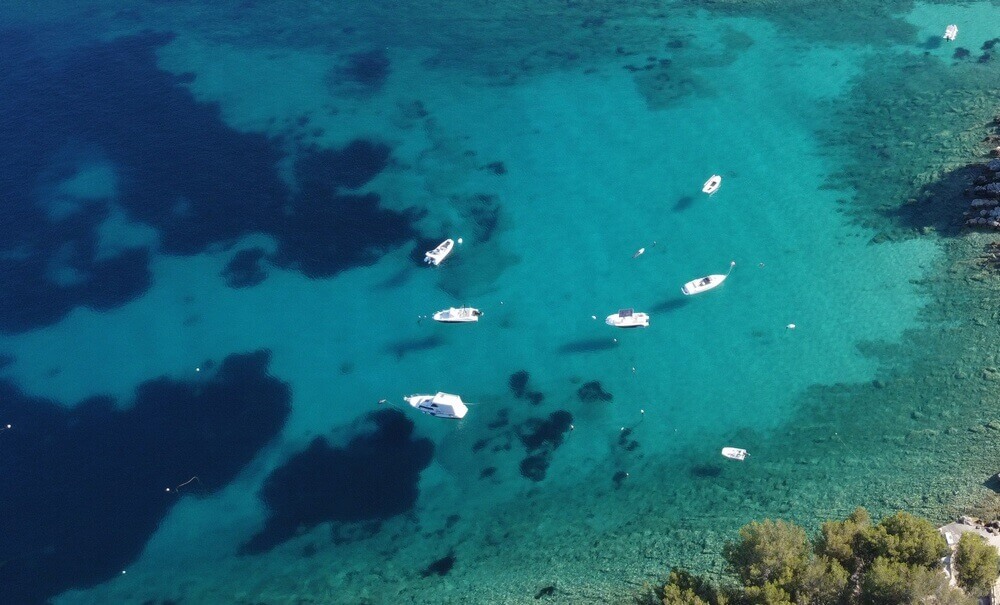
Island of Korčula
Korčula Island: Croatia's Historic Wine & Adriatic Paradise
Korčula Island: Croatia's Historic Wine & Adriatic Paradise
Located in southern Croatia, Korčula Island's medieval old town in Korcula Town, along with exceptional local wines like Pošip and Grk, and stunning Adriatic Sea beaches, draws history enthusiasts, wine aficionados, and relaxation seekers. Pronounced “KOR-chew-la” (with “č” sounding like “ch” in “church”), this Croatian gem offers visitors authentic Dalmatian culture, diverse activities from hiking ancient trails to wine tasting in family vineyards, and unique gastronomy centered on fresh seafood and local olive oil. Its central values are the rich history, distinct viticultural identity, and serene natural beauty.
Is Korčula, Croatia, Worth Visiting?
Yes, Korčula Island, Croatia, is worth visiting for travelers seeking a destination blending rich history, unique culture, outstanding wine and gastronomy, varied activities, and captivating natural landscapes within the Adriatic Sea. The island's value is established by the following attributes, distinguishing it within the Dalmatian archipelago.
Korčula Island’s cultural heritage is rich, with Korčula Town at its heart. This medieval old town, often likened to Dubrovnik, features remarkably well-preserved fortifications and Venetian architecture, recognized on the UNESCO Tentative List. The town's layout and structures reflect centuries of history. Adding to this is the local lore identifying Korčula as the birthplace of explorer Marco Polo, a narrative celebrated locally, alongside living traditions like the dramatic Moreska sword dance.
Korčula holds a prominent position as Croatia's premier wine island, specifically for indigenous white grapes. It is the origin of Pošip and the almost exclusive home of Grk, both highly regarded white wines. Numerous wineries offer authentic wine tasting experiences.
Korčula Island offers a diverse range of activities, from historical exploration and wine tasting to swimming at numerous beaches, hiking and cycling through scenic landscapes, exploring the Vela Spila Cave, and island hopping to islets like Badija.
Korčula gastronomy highlights fresh, local Mediterranean ingredients – seafood, olive oil, vegetables – and unique dishes like Žrnovski Makaruni pasta.
In essence, Korčula’s appeal answers "What is Korcula Croatia known for?" – its medieval Korcula Town, the Marco Polo legend, and its distinctive local wines. This inherent value is situated within a specific geographical context.

Korčula Island, Croatia: Map & Location
Korčula Island is geographically located in the southern Adriatic Sea, a part of the central Dalmatian archipelago of Croatia. It is positioned parallel to the Pelješac Peninsula, separated by a channel that is 1.3 to 3 kilometers (0.8 to 1.9 miles) wide. As the sixth-largest Adriatic island, Korčula measures approximately 46.8 kilometers (29.1 miles) long and up to 7.8 kilometers (4.8 miles) wide, covering an area of 279 square kilometers (108 square miles). Its highly indented coastline stretches 182 kilometers (113 miles), featuring numerous bays and coves. The island's hilly interior, peaking at 568 meters (1,864 feet), is characterized by dense Mediterranean pine forests and maquis shrubland.
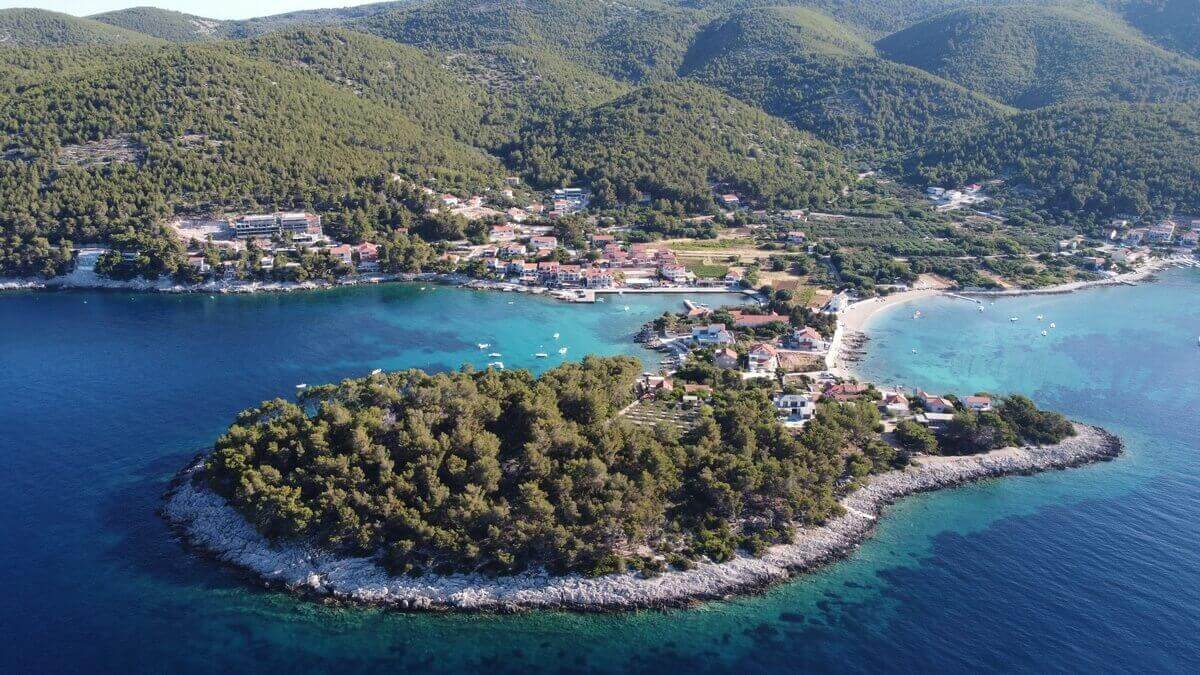
What To See in Korčula Island, Croatia
The essential sights to see on Korčula Island, Croatia, are principally its historically significant towns, led by the remarkable Korcula Town, alongside Blato, Vela Luka, and Lumbarda, complemented by specific natural attractions. The most important among these is Korcula Town. Its medieval old town, located on a fortified peninsula, is the primary attraction. Defined by 14th- and 15th-century walls, towers, and gates (Land Gate, Sea Gate), its interior features a fishbone street pattern designed for climate control and defense. Must-visit sights include St. Mark's Cathedral, featuring Gothic-Renaissance architecture, Tintoretto paintings, and stunning bell tower views. The adjacent Abbey Treasury showcases religious art, while the Town Museum offers a detailed history of the island. The purported birthplace of Marco Polo is also worth visiting. Exploring these sights provides a deep dive into the island's rich past.
Other important settlements include Blato, a large inland village known for its linden tree-lined avenue, its agricultural heritage (including wine and olive oil), the Sanctuary of Blessed Marija Petković, and the Kumpanija sword dance tradition. Vela Luka, the western port town, is known for fishing, mosaics, and proximity to the significant archaeological site Vela Spila Cave. Lumbarda, near the eastern tip, is notable for its sandy beaches and is home to Grk wine. Beyond the towns, natural sights like the unique rock formations of Kočje Nature Reserve near Žrnovo offer different perspectives on the island's landscape.
These varied sights form the backdrop against which visitors engage in numerous island activities.
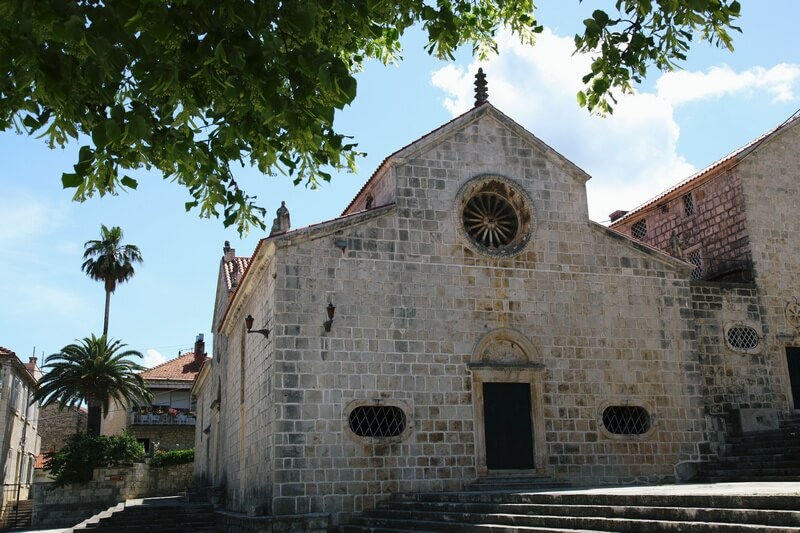
Things to Do in Korčula Island, Croatia
The main things to do on Korčula Island, Croatia, encompass exploring its rich history and culture, indulging in wine tasting, enjoying diverse water activities like swimming and island hopping, and undertaking land adventures such as hiking, cycling, and buggying.
The following are options on what to do in Korčula:
- Exploring the historical towns, especially the detailed exploration of Korcula Town's medieval old town, museums, and walls, as well as visiting Blato, Vela Luka, and Vela Spila Cave.
- Wine Tasting is a signature experience; visiting local wineries in the Pošip region (Čara, Smokvica), the Grk area (Lumbarda), or near Blato (wineries Jovanov, Tasovac, Vitis) is highly recommended.
- Water activities are central: swimming and sunbathing at the island's varied beaches, sea kayaking, and snorkeling. Island hopping by water taxi to nearby islets like Badija (home to a monastery and deer), Proizd (with pristine nature), and Vrnik (with stone quarries) is popular.
- Land activities include hiking marked trails, like Mt Hum near Vela Luka for views, and cycling scenic routes through vineyards and along the coastline (bicycle Korčula Island rentals available). Adventure options include off-road buggying tours.
- Cultural engagement involves visiting museums (Town Museum, Marco Polo Centre, Ethno Museum Barilo in Blato) and potentially witnessing a Moreska sword dance performance in summer.
Central to many visitors' experiences are the island's famed coastal spots.
Korčula Island's Top Beaches
Korčula Island's top beaches are a desirable mix of sandy expanses (rare for Dalmatia), scenic pebbled coves, and intimate bays found mainly near Lumbarda and along the southern coast.
Vela Przina is a relatively long stretch of fine sand ideal for families
Bilin Zal is a smaller beach near Vela Przina but offers excellent views.
Pupnatska Luka is among the celebrated pebbled beaches on the south coast, renowned for its beauty, featuring smooth white pebbles and clear turquoise water in a sheltered bay. Access is via a steep road.
Vaja Beach, near Račišće on the north coast, is another stunning pebbled cove known for its azure water and relative seclusion.
Orlandusa Beach and nearby Bratinja Luka on the south coast offer beautiful, less crowded pebbled coves for tranquility seekers.
Ratak Beach, Stupa Island Beach, Laguna Beach, Prišćapac Beach, and Izmeta Beach are top choices when staying in Blato. While convenient town beaches exist in Korcula Town and Vela Luka, these destination beaches provide superior scenery and water quality for swimming and relaxing.
Complementing the coastal relaxation is the pleasure of discovering the island's local flavors.
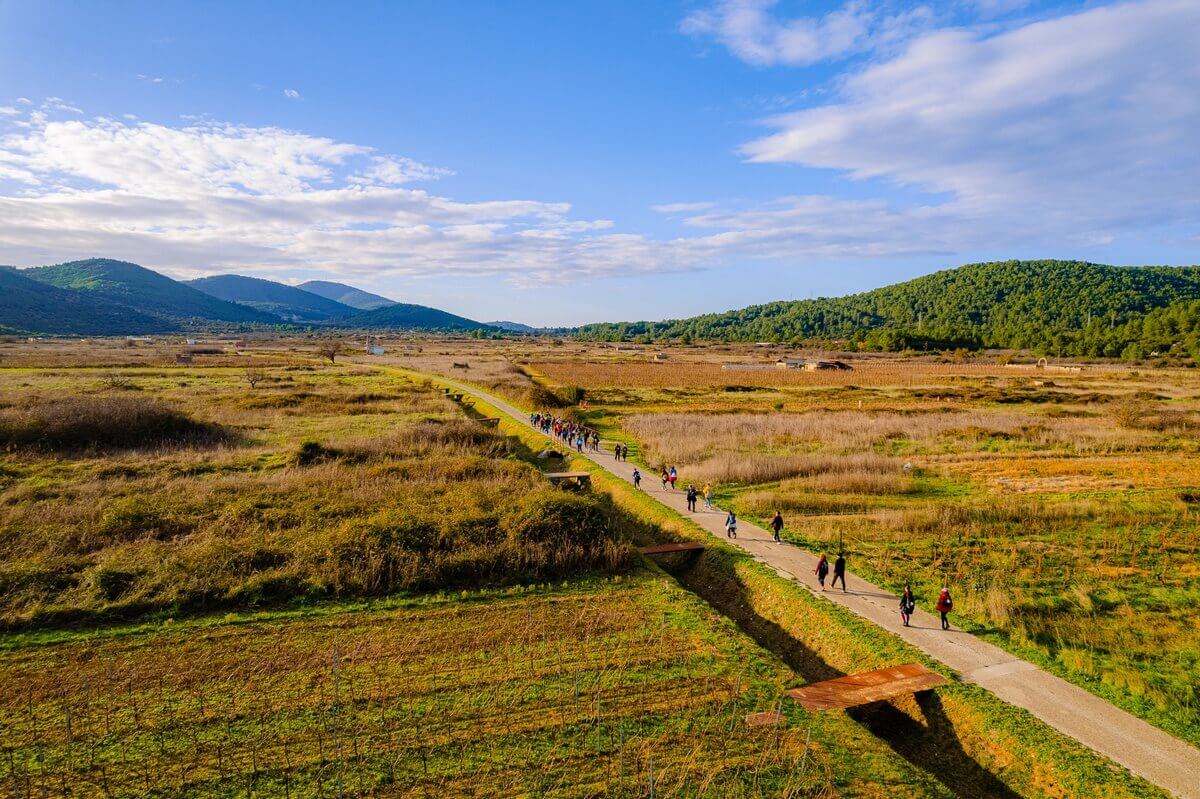
What To Eat on Korčula Island, Croatia: Local Wine & Gastronomy
The gastronomy of Korčula Island, Croatia, showcases fresh Adriatic flavors and unique local specialties, best experienced alongside the island's renowned wines. Sampling these signature tastes provides an authentic culinary journey:
- Žrnovski Makaruni: Seek out this distinctive, hand-rolled pasta originating from the village of Žrnovo. This traditional dish is often prepared with a rich beef sauce (similar to pašticada) or combined with local seafood, offering a true taste of Korčulan home cooking.
- Adriatic Seafood Specialties: Enjoy freshly caught fish (sea bream, bass, sardines), squid, and octopus prepared with characteristic simplicity – expertly grilled (“na gradele”) or simmered in a flavorful “brodet” (fish stew). For a lively experience, visit the “Fishermen’s Evenings” in Lumbarda (summer Fridays) for freshly grilled catches.
- Korčulan Olive Oil: Taste the island's liquid gold. Produced extensively from local olive varieties like Lastovka and Drobnica, Korčula's high-quality olive oil is known for its distinct peppery notes and is used generously as a finishing touch and essential ingredient.
- Indigenous Island Wines: Pair your meals with Korčula's signature white wines. Pošip, grown mainly in the island's center, offers aromatic richness, while Grk, found almost exclusively around Lumbarda, is a unique dry white with historical Greek origins and a distinct character. Wine tasting at local wineries is highly recommended.
- Authentic Dining Experiences: Dine in traditional “konobas” (family-run taverns) for hearty, local fare in a rustic atmosphere. Alternatively, explore “agroturizam” farm-to-table establishments, such as Mala Kapja near Blato, which often serve meat and produce raised on-site, sometimes cooked under a traditional “peka” dome.
Exploring these unique dishes, ingredients, and dining settings allows visitors to fully appreciate the authentic gastronomy of Korčula Island.
Of course, experiencing these culinary delights requires finding a proper place to stay first.
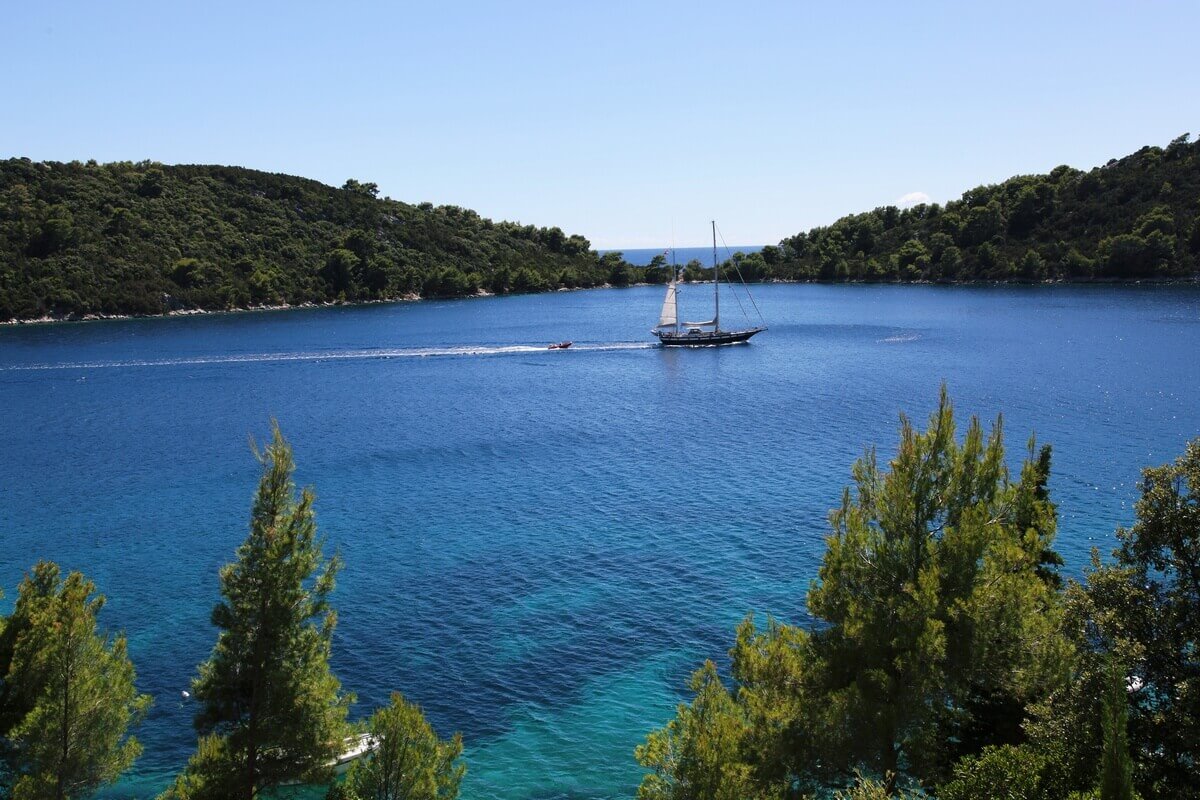
Where to Stay: Korčula Island Accommodation Options
Choosing where to stay on Korčula Island involves selecting a location and type of accommodation that aligns with your travel style and priorities. Options are concentrated in Korčula Town, Lumbarda, Vela Luka, and coastal settlements like Prižba, near Blato. Types range from hotels and private apartments (such as Airbnb and local rentals) to villas and limited camping sites.
Which part of Korčula is best?
The main island’s locations offer different advantages: Korčula Town provides historical immersion and convenience, but can be busy. Lumbarda excels for sandy beach access and a relaxed village feel. Vela Luka serves as a western hub with good amenities. The Blato coastal area (e.g., Prižba) is ideal for those seeking tranquility, direct sea access, and family-friendly resorts away from crowds, for peaceful seaside escapes. Resorts such as the Alfir Resort often feature private swimming areas, pools, and restaurants. (Link to Alfir Resort page; make sure this is the first internal link on this page).
Other accommodations, ranging from budget options like Korčula Island cheap hotels to luxury stays in villas Korčula Island, are available across this destination gem. Carefully consider the location's proximity to your desired activities and atmosphere when booking.
Understanding how to reach the island is, of course, the prerequisite for getting to these lovely accommodations.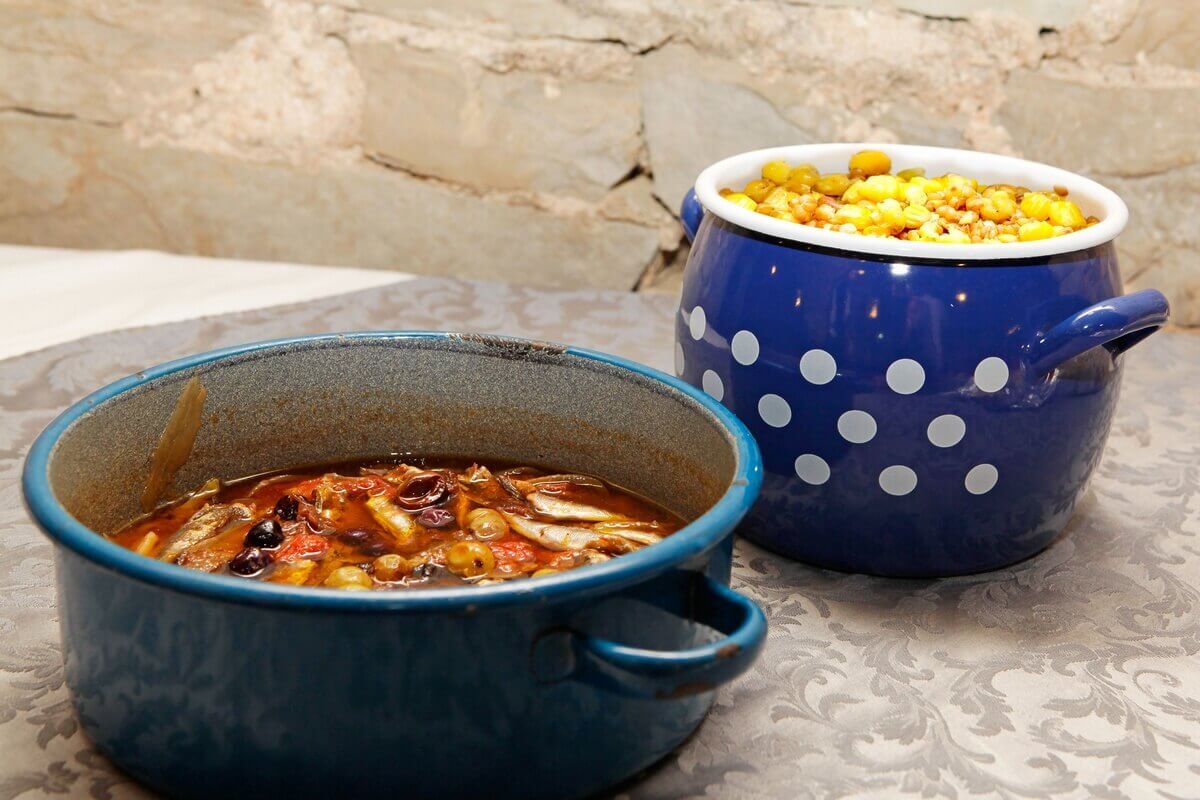
How to Get to Korčula Island: Flights, Ferries & Driving Routes
Reaching Korčula Island primarily involves sea travel by ferry or catamaran, as it lacks an airport. The following are the primary access travel modes to Korcula Island.
Via Air & Sea: Fly into Dubrovnik (DBV) or Split (SPU) airports, then transfer to the respective city ports (Gruž Harbour in Dubrovnik, Split main port) to catch a passenger catamaran (fastest, ~2-3.5 hours) or a car/passenger ferry (slower) to Vela Luka. Advanced booking for catamarans in summer is recommended.
Via Car & Ferry: Drive down the Croatian A1 motorway (from the north), or D8 coastal road (from the south), utilize the Pelješac Bridge to reach the Pelješac peninsula, continue to Orebić, and take the frequent short car ferry (15-20 mins) across to Dominče, near Korcula Town.
Inter-Island Ferries: Seasonal connections link Korčula with other islands like Hvar, Mljet, and Lastovo. Always verify current schedules directly with operators.
Once on Korčula, efficient movement around the island makes the visit even better.
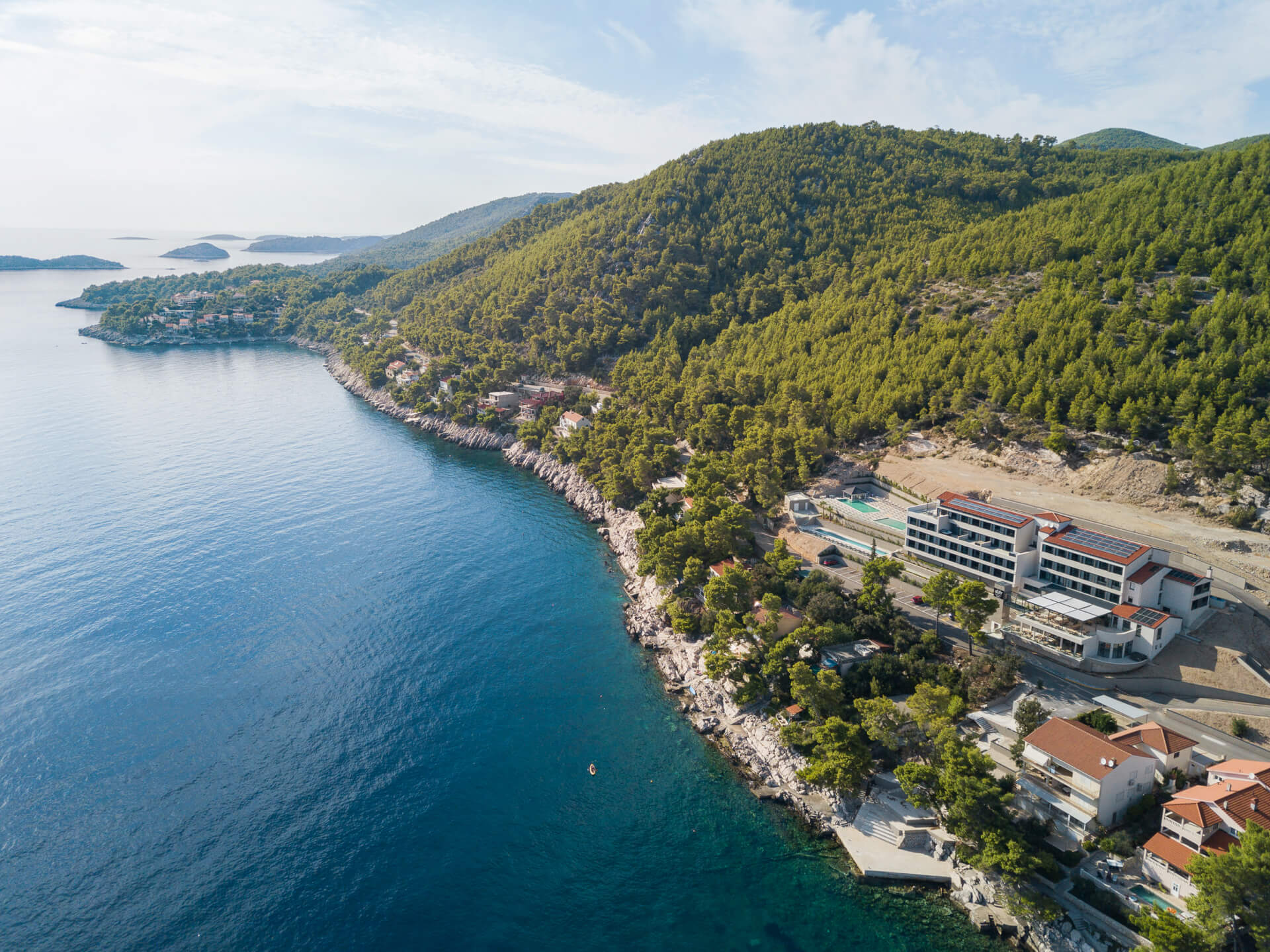
Getting Around Korčula Island
Navigating Korčula Island uses local buses, taxis, rental vehicles (cars and scooters), bicycles, and water taxis. Options include the following.
Buses: Arriva operates routes connecting major towns like Korčula Town, Blato, and Vela Luka. Service is reliable on the main routes but less frequent to smaller villages or during the off-season.
Taxis: Available in main towns, suitable for shorter trips or reaching specific locations.
Rental Cars/Scooters: Offer maximum flexibility for exploration (Korčula Island car rental available). A car is recommended for extensive island discovery. Scooters are practical for navigating narrow roads.
Bicycle Rentals: Good for local exploration, the terrain is hilly.
Water Taxis: Essential for reaching nearby islets like Badija and Proizd from Korcula Town or Vela Luka.
Can you walk around Korčula island?
Yes, you can walk around Korčula Island, although walking is mostly suitable within towns, but not for traversing the island's full length.
Choosing the right time to visit influences both transport availability and the overall experience.
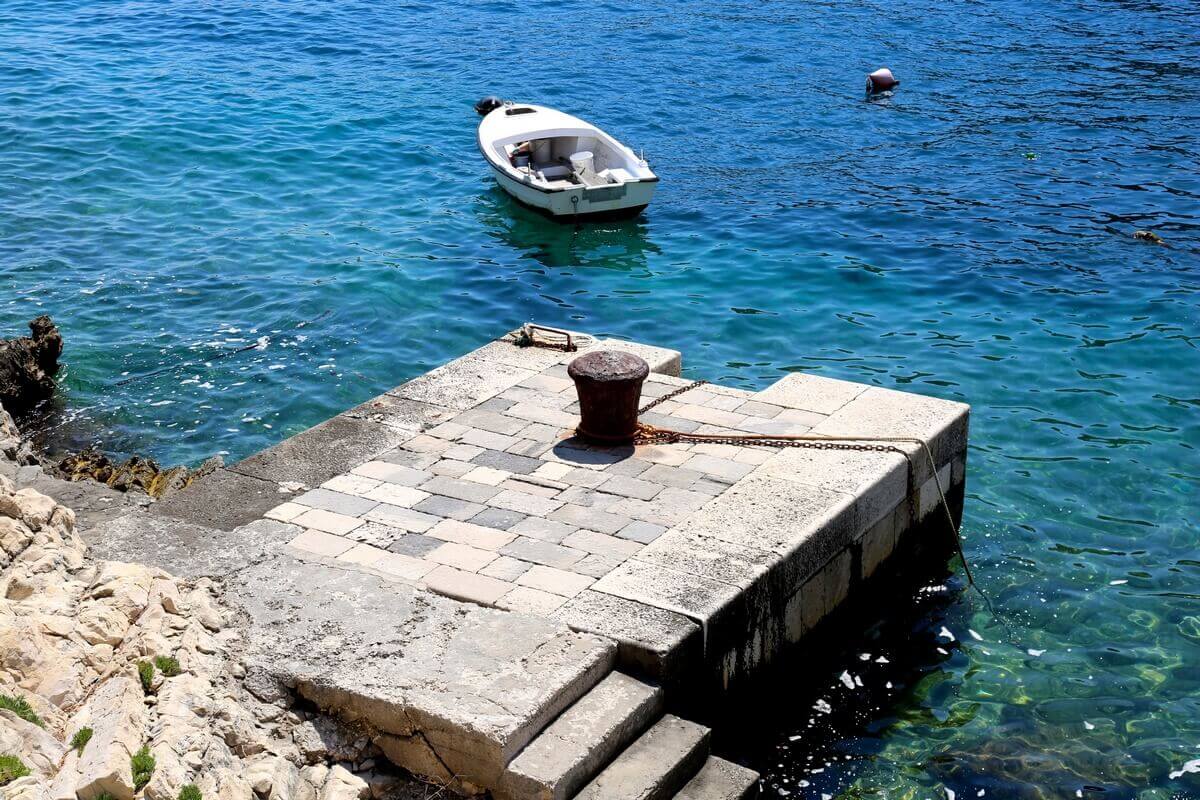
When is the Best Time to Visit Korčula Island, Croatia?
The best time to visit Korčula Island, Croatia, is generally during the shoulder seasons: late spring (May to June) and early autumn (September to October). These periods offer an optimal balance of pleasant weather, suitable for activities like swimming, hiking, and cycling (average highs of 21 °C to 27 °C / 70°F to 81°F), fewer crowds than during peak summer, and largely operational tourist services. Sea temperatures are comfortable for swimming for most people (18°C-23°C / 64°F-73°F).
Peak summer (July and August) guarantees the warmest weather and sea, making it ideal for beach holidays, but it also brings significant crowds and higher prices.
The off-season (November to April) is very quiet, with cool weather, potential rain, and many closures, making it suitable only for those seeking solitude.
For a relaxed yet active holiday, the shoulder seasons provide the most advantageous conditions.
Finally, a few practical details complete the pre-travel preparation.
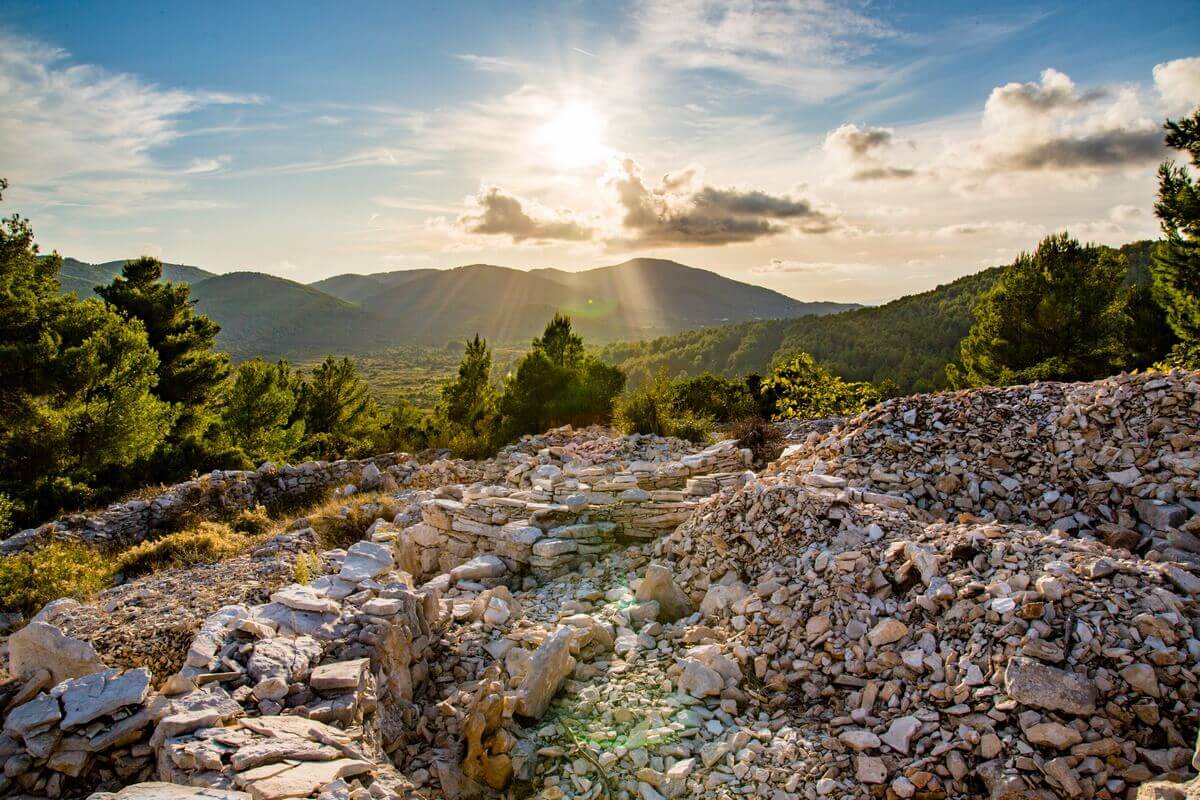
Korčula Island Quick Facts: Know Before You Go (H2 - Supplementary Context)
These facts help ensure a smooth arrival and stay.
Population: Approximately 15,000 residents live on the island.
Currency: The official currency is the Euro (€). ATMs and card payment facilities are common in towns.
Language: Croatian is the official language; English is widely spoken in tourist areas, and German and Italian are also understood.
Water: Tap water is safe and potable
Embark on Your Korčula Island Adventure
Korčula Island stands out as a premier Dalmatian destination, seamlessly blending rich history epitomized by Korcula Town and the Marco Polo legacy, with exceptional wine (Pošip, Grk) and gastronomy. Its beautiful beaches, varied activities, and clear Adriatic waters provide ample opportunities for relaxation and adventure. By understanding the island's key attractions, logistical considerations for travel and accommodation, and the best time to visit, you are now equipped to plan an enriching holiday. Discover the allure of Korčula and create lasting memories on this captivating Croatian island.
Properties
Find accommodation in Omiš
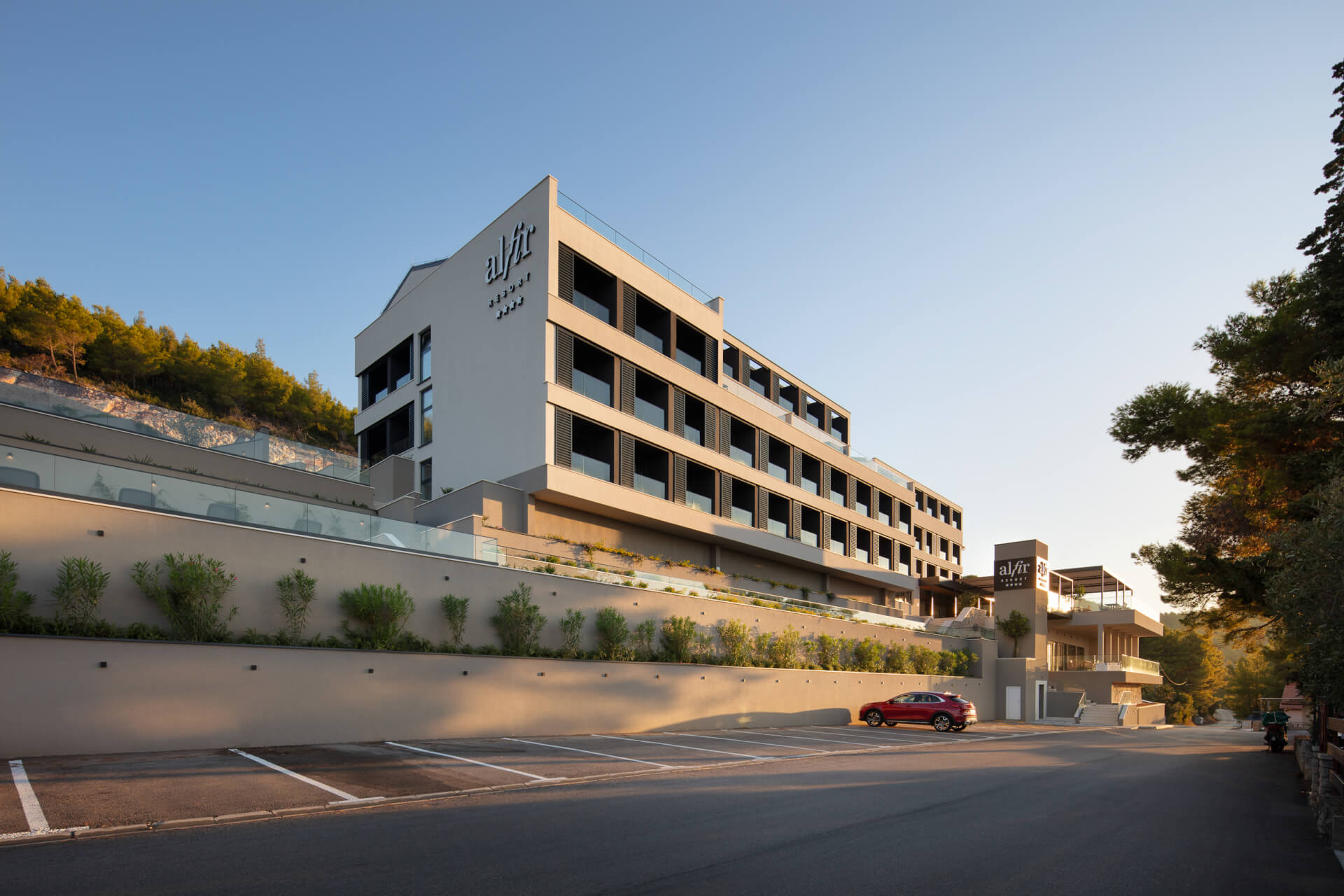
Alfir resort
- Blato · Show on Map
- Wi-Fi·
- Private beach·
- Public beach·
- Main restaurant·
- A la carte restaurant